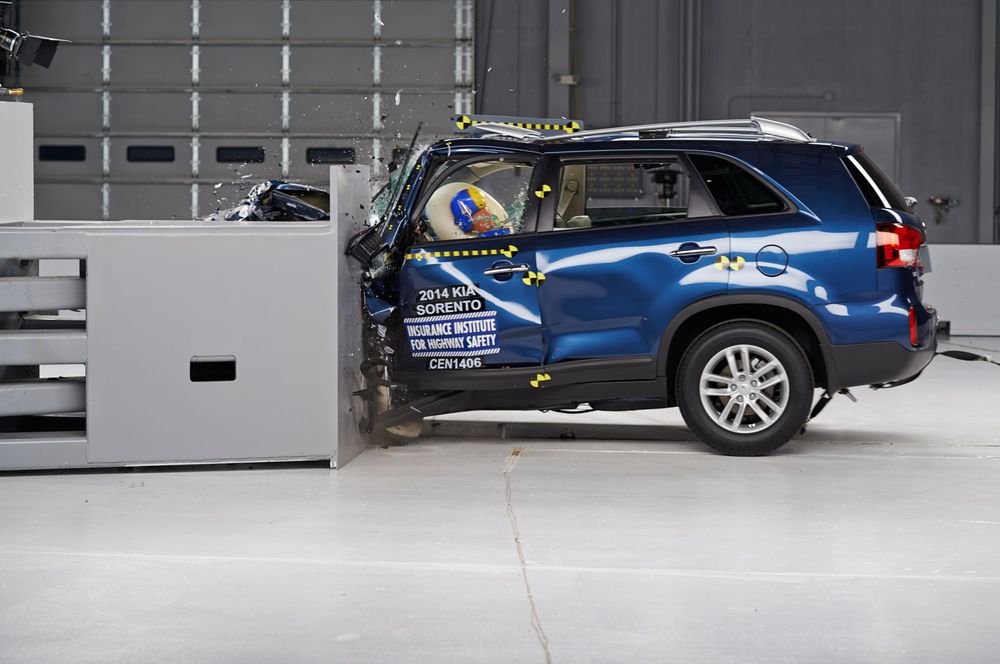Heavier Vehicles Actually DON’T Always Protect You More in a Crash
There’s an upper limit to how much mass improves safety—and making heavier vehicles lighter might help.
Conventional wisdom says, all other things being equal, surrounding yourself with the most metal possible will protect you the best in a crash. And that has been borne out by some studies, and assuming bigger is better in a crash is still a reasonable rule of thumb up to a limit. Even the Insurance Institute for Highway Safety (IIHS) says so.
0:00 / 0:00
There are many caveats. Massive vehicles are much, much more dangerous for pedestrians, bicyclists, and any other living or smaller thing on the road. And the IIHS also acknowledges that making these large, heavy vehicles lighter wouldn’t affect safety as much as you think. It’s not a 1:1 relationship between vehicle mass and vehicle safety, in other words. Lastly, when a large vehicle strikes a small one, the occupants of the smaller vehicle are disproportionately killed. For example, since 2005, a pickup truck striking a regular car is 159 to 212 percent more likely to result in the death of an occupant of the car, compared to car-to-car crashes, according to IIHS.
A new study by IIHS puts a bit of detail on the numbers and assumptions involved. Basically, as the safety systems in all vehicles have improved—think airbags, automatic emergency braking, and the way bumpers are designed—the role of vehicle weight has declined. In other words, occupying a heavier vehicle doesn’t offer as much of a benefit as it once did because of all the systems preventing accidents, or mitigating the effects, that all modern vehicles are increasingly equipped with.
The study used Fatality Analysis Reporting System (FARS) data from 2011 to 2022, focusing on vehicle crashes in which the vehicles were between 1 and 4 years old and there was at least one resulting driver fatality. (In a somewhat sobering process, the total of 440,604 traffic fatalities in that timeframe was winnowed down to 9,674 deaths by this process.)
The result is really interesting. There’s a divergence at a specific weight point—about 4,000 pounds. Below that threshold, IIHS found that heavier vehicles confer safety benefits to the driver that increase by weight, but the fatality rate in the other vehicle increases at a comparatively small amount. That is to say, a heavier vehicle is safer for the driver, and only a little bit more dangerous to other vehicles, up to about 4,000 pounds. The IIHS example here is illustrative: “a lighter car gaining 500 additional pounds was associated with a 17-point reduction in driver death rate and only a single point increase in car partner driver death rate.”
Above that two-ton threshold, things go the other direction. Drivers of these vehicles don’t see an additional safety benefit for any additional weight, and the fatality rate of the vehicle it impacts increases significantly.
The conclusion? There’s a clear upper limit to vehicle weight when it comes to maximizing a driver’s safety. IIHS concludes that reducing the weight of the largest vehicles could actually benefit driver safety, and of course improve the fatality rates of the vehicles they might hit. Reducing vehicle mass also has a number of knock-on benefits, like improving fuel economy and perhaps payload or cargo capacity, depending on other factors. But the bottom line is that reducing the weight of the heaviest vehicles on the road will almost certainly save lives.
Like a lot of the other staffers here, Alex Kierstein took the hard way to get to car writing. Although he always loved cars, he wasn’t sure a career in automotive media could possibly pan out. So, after an undergraduate degree in English at the University of Washington, he headed to law school. To be clear, it sucked. After a lot of false starts, and with little else to lose, he got a job at Turn 10 Studios supporting the Forza 4 and Forza Horizon 1 launches. The friendships made there led to a job at a major automotive publication in Michigan, and after a few years to MotorTrend. He lives in the Seattle area with a small but scruffy fleet of great vehicles, including a V-8 4Runner and a C5 Corvette, and he also dabbles in scruffy vintage watches and film cameras.
Read More


